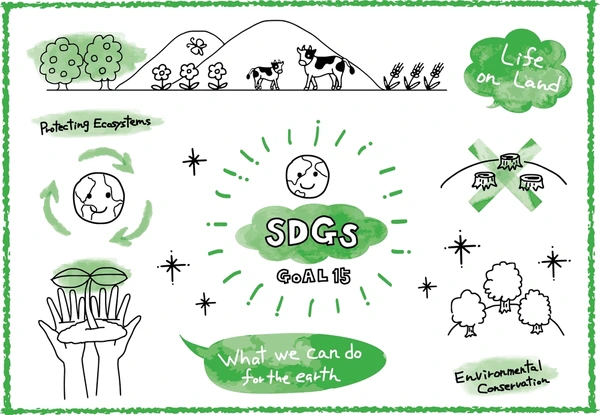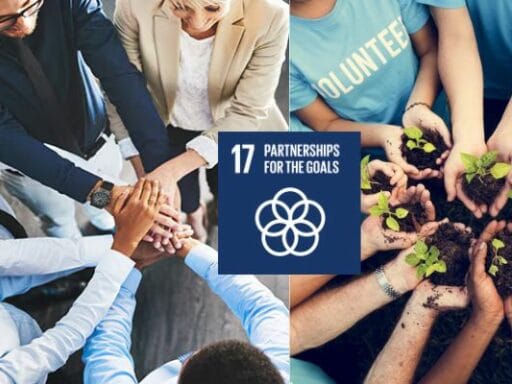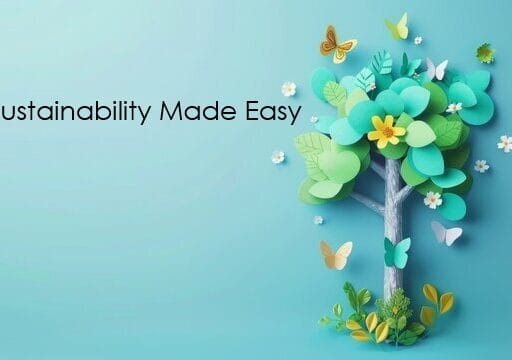“Life on Land,” also known as Sustainable Development Goal 15 , is a crucial part of the UN’s 2030 Agenda for Sustainable Development. This objective emphasizes how crucial it is to preserve, repair, and encourage the sustainable use of forests, terrestrial ecosystems, biodiversity, and land resources. SDG Goal 15 aims to stop land degradation, fight desertification, and protect ecosystems that are essential to life as we know it. Reaching this objective is crucial for human welfare, global progress, and environmental sustainability.
Understanding SDG Goal 15
The sustainable management of terrestrial ecosystems, such as forests, mountains, wetlands, and drylands, is the subject of SDG Goal 15. Essential functions including clean air, water purification, climate management, and resources for livelihoods are all provided by these ecosystems. For example, over 80% of terrestrial species live in forests, while more than half of mankind depends on mountains as a source of water. This objective also emphasizes how ecosystems and biodiversity are linked to more general concerns like poverty reduction, food security, and climate change. Life on Land tackles the underlying causes of environmental deterioration and fosters a peaceful coexistence between humans and nature by placing a strong emphasis on ecosystem protection and sustainable land use.
Why SDG Goal 15 Matters?
It is impossible to exaggerate the significance of SDG Goal 15. Deforestation and unsustainable farming methods are causing forests, which are essential for storing carbon and regulating the climate, to quickly disappear. An estimated 10 million hectares of forests are destroyed annually, which raises greenhouse gas emissions and reduces biodiversity. Another essential component of Life on Land is biodiversity. Millions of species live in terrestrial ecosystems, many of which are threatened by pollution, habitat loss, and climate change. Loss of biodiversity affects human health, agriculture, and economics in addition to upsetting natural equilibrium.
Furthermore, around 2 billion hectares of land are impacted by land degradation globally, which lowers agricultural output and makes people more susceptible to climatic shocks. In order to build a sustainable future where ecosystems and communities flourish, these issues must be addressed.
Key Targets of SDG Goal 15
- Combat Deforestation and Restore Forests
Reducing deforestation, restoring degraded forest regions, and managing forests sustainably are the objectives of SDG Goal 15. This entails encouraging ethical timber sourcing and replanting projects. - Combat Desertification
It is crucial to address land degradation and desertification, particularly in arid and semi-arid areas. In order to improve agricultural output and replenish soil fertility, sustainable land management techniques are encouraged. - Protect Biodiversity
It is essential to protect ecosystems and stop the extinction of species. This include controlling exotic species, preventing poaching, and establishing protected zones. - Mobilize Resources
SDG Goal 15 requires sufficient financial resources and technical support. This covers collaborations between institutions, the business sector, and governments.
Challenges
Achieving SDG Goal 15 presents numerous challenges, including:
- Deforestation and Habitat Loss: Unsustainable logging, agriculture, and infrastructure development continue to threaten forests and biodiversity.
- Climate Change: Rising temperatures, altered precipitation patterns, and extreme weather events exacerbate land degradation and biodiversity loss.
- Insufficient Funding: Many countries lack the financial resources and technical expertise needed to implement large-scale conservation projects.
- Conflicts and Political Instability: Armed conflicts and weak governance hinder efforts to protect ecosystems in vulnerable regions.

Practical Steps to Advance SDG Goal 15
To overcome these challenges, the global community must take decisive action:
- Encourage the Use of Sustainable Agriculture
Crop rotation, agroforestry, and organic farming practices can improve biodiversity and lessen land degradation. - Encourage the planting of new trees and forests
To rehabilitate damaged areas, governments and nonprofits should fund extensive tree-planting projects. - Strengthen Legal Structures
Illegal mining, logging, and wildlife trading may be stopped by enforcing rules and strengthening environmental laws. - Increase Knowledge
Campaigns for public education can promote sustainable consumption and emphasize the value of biodiversity.
Case Study:
The Great Green Wall Initiative
The Great Green Wall (GGW) project in Africa is an outstanding illustration of how SDG 15th Goal is being advanced. Through the construction of a 7,000-kilometer wall of trees, this enormous initiative seeks to repair damaged areas in 11 Sahelian countries. Since its inception, the program has improved millions of people’s access to food, rehabilitated more than 20 million hectares of damaged land, and generated jobs. The GGW serves as an example of the revolutionary power of group efforts to stop desertification, protect ecosystems, and promote sustainable development.
Costa Rica’s Forest Conservation Success
Costa Rica is a shining example of accomplishing SDG Goal 15 and has become a global leader in forest protection. Just 21% of the nation’s territory was covered by trees in the 1980s due to massive deforestation. Costa Rica used creative measures to buck the trend after realizing the concerning repercussions. The Payment for Environmental Services (PES) program, which pays landowners for preserving trees and preserving ecosystem services, is the major factor behind its success. Costa Rica is now among the greenest nations in the world because to this project, stringent laws, and community involvement.
The amount of forest cover has increased to more than 50% now, supporting ecotourism, which is a major driver of the national economy, and offering vital habitats for wildlife. Costa Rica is a model for sustainable land management under goal Life on Land because of its proactive strategy, which highlights the possibility of combining environmental preservation with financial incentives.
The Role of Fherist Services in Advancing SDG Goal 15
Fherist Services is a committed organization that promotes sustainable practices and ecosystem protection in order to fulfill goal of Life on Land. Among their initiatives are:
- Biodiversity Preservation Projects: To save endangered species and repair ecosystems, Fherist Services works with nearby communities.
- Programs for Sustainable Land Use: The group promotes ethical agricultural methods and backs reforestation initiatives.
- Educational Campaigns: Fherist Services informs people about the value of biodiversity and sustainable land management through seminars and awareness campaigns.
FAQs
1. What is SDG Goal 15, and why is it important?
The UN 2030 Agenda’s SDG Goal 15 is all about preserving, repairing, and encouraging the sustainable use of terrestrial ecosystems. It places a strong emphasis on stopping land degradation, preserving biodiversity, fighting desertification, and stopping deforestation. Because food security, clean water, climatic stability, and the survival of all species on Earth depend on healthy ecosystems, achieving this aim is essential.
2. How does SDG Goal 15 aim to combat deforestation?
Through programs that support afforestation, reforestation, and sustainable forest management, this 15th goal fights deforestation. It encourages appropriate production methods and advocates for legislative reforms to stop illicit logging. Furthermore, Goal 15 involves communities in conservation initiatives and places a strong emphasis on restoring damaged forests. This objective guarantees the preservation of biodiversity and ecosystem services by tackling the underlying causes of deforestation.
3. How can individuals contribute to SDG Goal 15?
Supporting sustainable goods, cutting waste, and planting native trees are all ways that individuals may help achieve SDG Goal 15. It is essential that they and others learn about biodiversity conservation. Volunteering for conservation projects and promoting stronger environmental regulations also have a big influence. Global progress toward accomplishing SDG Goal 15 may be fueled by small, regular local activities.
4. What are some successful examples of SDG Goal 15 implementation?
In reaching SDG Goal 15, nations like Bhutan and Costa Rica have made impressive strides. By implementing the Payment for Environmental Services program, Costa Rica greatly expanded the amount of forest cover. Bhutan conserves biodiversity and sequesters carbon by keeping more than 70% of its land covered by forests. These illustrations show how well policy innovation, community engagement, and sustainable practices work together to accomplish this objective.
Conclusion
“Life on Land,” or SDG Goal 15, is a fundamental component of the 2030 Agenda for Sustainable Development. A sustainable future depends on halting land degradation, conserving biodiversity, and safeguarding terrestrial ecosystems. Governments, companies, and people must work together globally, come up with creative solutions, and be steadfast in their dedication to achieving this goal. We can build a world where ecosystems, biodiversity, and communities all flourish by tackling the problems and putting workable solutions into place. By working together, we can achieve SDG Goal 15 and guarantee a sustainable Earth for future generations.








